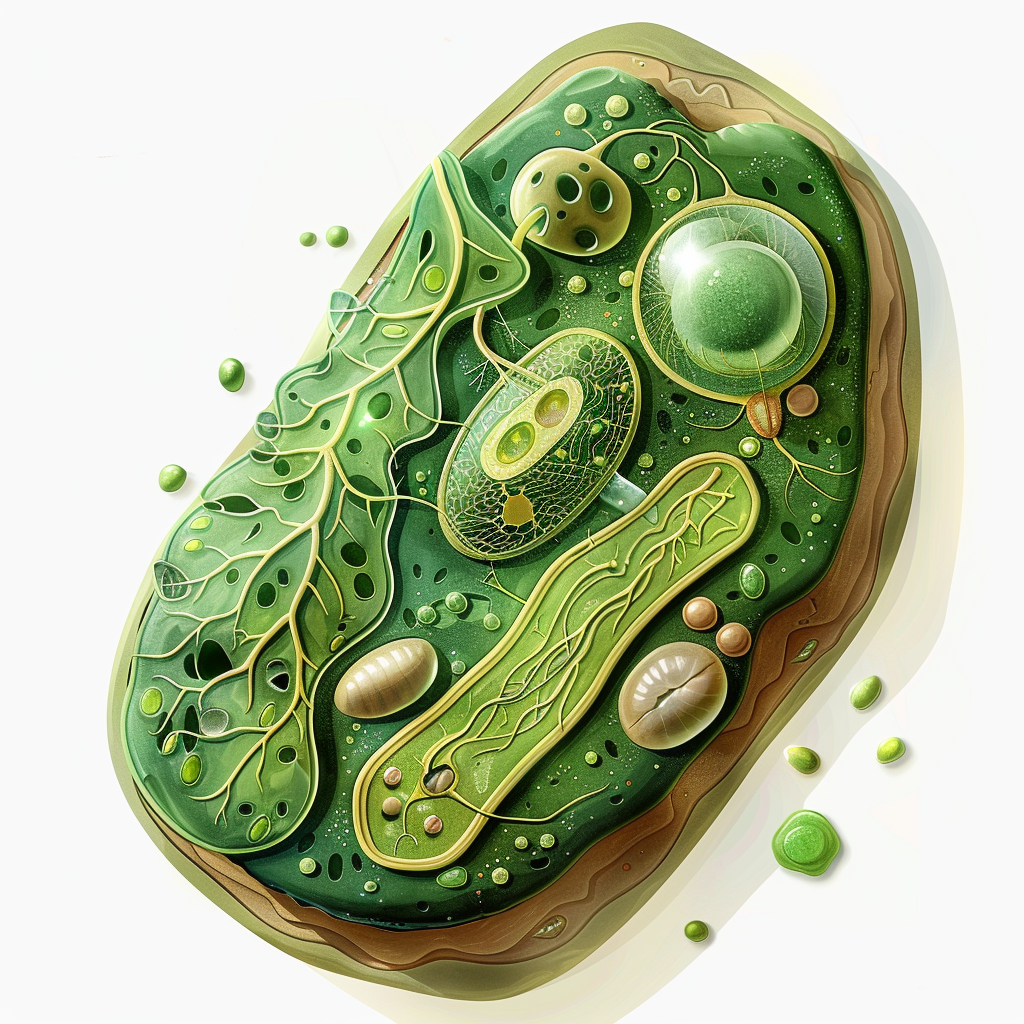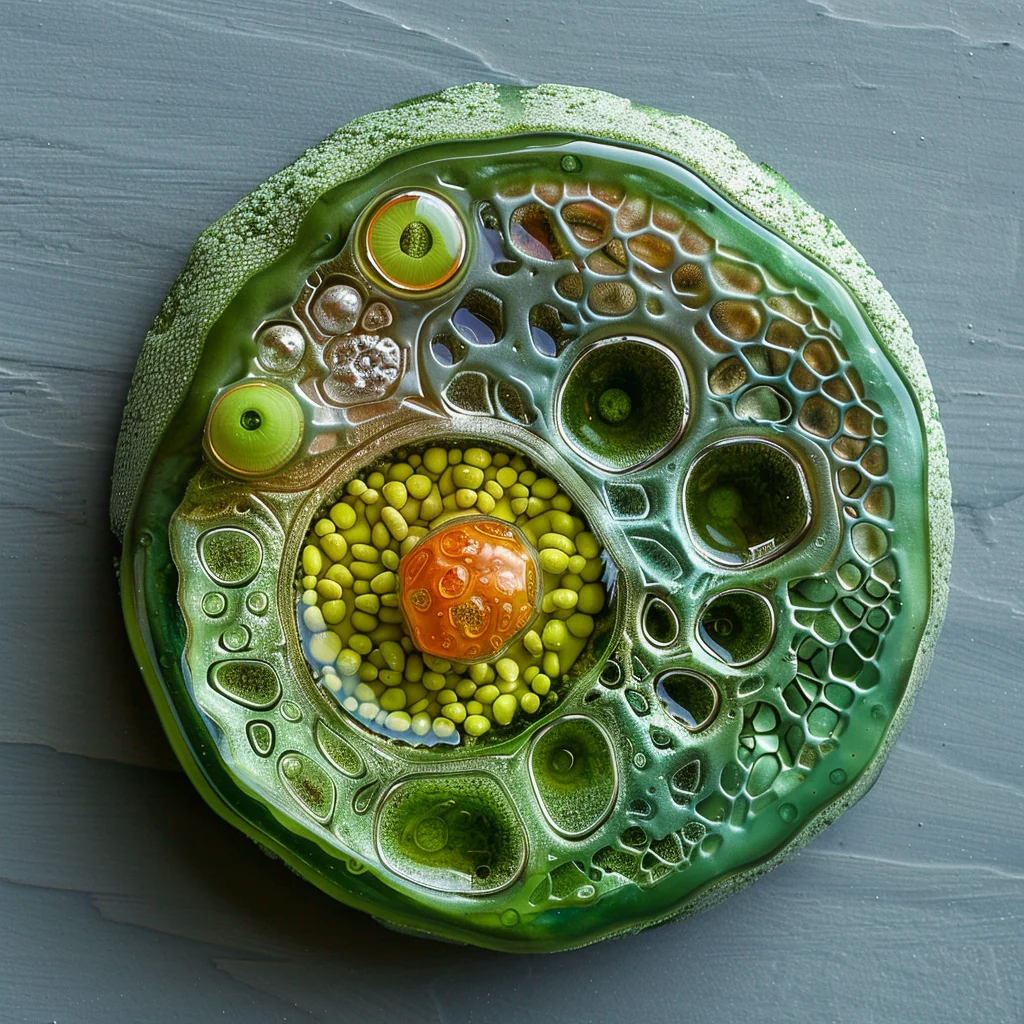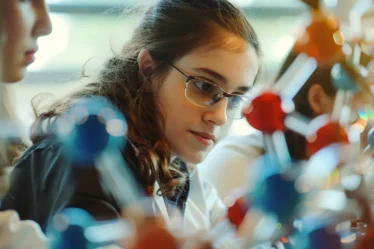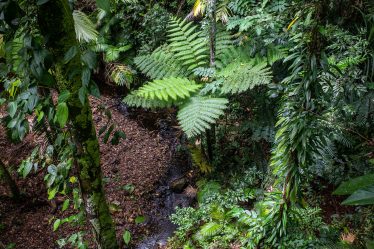
Plant cells are the basic units of life in green plants, which are photosynthetic organisms belonging to the kingdom Plantae.
Plant cells have unique structures that set them apart from other eukaryotic cells, such as those of animals and fungi. By studying plant cells, you can understand how plants grow, develop, and interact with their environment.
This online biology textbook will help you learn about the structure and functions of plant cells, focusing on their distinctive features and their importance in the plant kingdom.
Essentials of Plant Cell
Are you short on time? Here are the must-know aspects of plant cell walls, chloroplasts, vacuole, plasmodesma, and other organelles.
🟠 Plant cells have a cell wall made of cellulose that provides structure and protection.
🟠 Chloroplasts in plant cells perform photosynthesis, converting sunlight into energy.
🟠 The vacuole in plant cells stores nutrients, regulates turgor pressure, and manages waste.
🟠 Plasmodesmata allow nutrient and hormone exchange between plant cells, facilitating communication.
🟠 The endoplasmic reticulum (ER) transports proteins and lipids throughout the plant cell.
Do you need help with plant cells? That’s okay! Personalized tutoring or interactive biology classes make these topics easier to understand. Explore more biology topics and expand your knowledge with our free Biology blogs.
Overview of Plant Cells
Plant cells are the building blocks of plants. They are eukaryotic cells, meaning they have a true nucleus enclosed within membranes and various other specialized structures called organelles. Unique features of plant cells include the presence of a cell wall, chloroplasts, and large vacuoles.
The cell wall, made primarily of cellulose, provides structural support and protection. Chloroplasts contain chlorophyll and are responsible for photosynthesis, which allows plants to convert light energy into chemical energy. The central vacuole maintains cell pressure and stores nutrients and waste products.
Importance of Plant Cells
Plant cells are essential because they form the foundation of all plant life. Plants produce oxygen and provide food for nearly all other life forms on Earth. Knowledge of plant cell structure and function is crucial for advancements in agriculture, such as developing disease-resistant crops and improving yield and nutritional value. Studying plant cells also benefits biotechnology and medical research, including producing pharmaceuticals and understanding plant-based nutrition.
Learn how antibiotics fight bacterial infections and the issue of antibiotic resistance, plus how our immune system uses phagocytes and lymphocytes to protect us.
Main Components of Plant Cells
Plant cells have unique structures that differentiate them from animal cells. These components are the cell wall, chloroplasts, vacuoles, cytoplasm, endoplasmic reticulum, and plasmodesmata. Each part has specific functions essential for the plant’s growth, development, and interaction with its environment.
Cell Wall Structure and Function
The cell wall is a defining feature of plant cells, providing structural support and protection. It is primarily made of cellulose, hemicellulose, and pectin, creating a robust yet flexible barrier outside the cell membrane. The cell wall maintains the shape of the plant cell and aids in communication through plasmodesma.
Plasmodesma are tiny channels that transfer nutrients, signaling molecules, and genetic information between cells, enabling coordinated growth and responses to environmental changes. The cell wall also helps prevent excessive water uptake, protecting the cell from bursting.
Different plants have variations in their cell wall composition. For instance, lignin adds rigidity to woody plants, while suberin in cork cells helps prevent water loss. These variations show how plants adapt to their environments.
Functions of the Cell Wall
- Provides structural support and maintains cell shape.
- The plant cell wall facilitates intercellular communication through plasmodesmata.
- The cell wall protects against mechanical stress and pathogens.
- Regulates water intake and prevents cell bursting.
Chloroplasts and Photosynthesis
Chloroplasts are essential for photosynthesis. These green organelles contain chlorophyll, the pigment that captures light energy. During photosynthesis, chloroplasts convert sunlight, carbon dioxide, and water into glucose and oxygen. This process is crucial for plant growth and energy production, fueling all cellular activities. Photosynthesis supports the plant’s metabolism and contributes to the oxygen supply in the atmosphere.
Chloroplasts have DNA and ribosomes, supporting the theory that they originated from ancient cyanobacteria through endosymbiosis. In addition to photosynthesis, chloroplasts are involved in synthesizing fatty acids and amino acids.
Vacuole in Plant Cell
The large central vacuole in plant cells is a multifunctional organelle vital for maintaining cellular balance. It is enclosed by a membrane called the tonoplast and filled with cell sap, a solution of water, enzymes, ions, and other molecules. The vacuole helps maintain turgor pressure, keeping the plant upright and firm. It also stores nutrients, waste products, and defensive compounds, aiding the cell’s metabolic processes and protecting against herbivores.
Additionally, the vacuole can break down complex molecules, similar to the lysosomes in animal cells. The vacuole stores secondary metabolites, such as alkaloids and anthocyanins, which deter herbivores and attract pollinators.
Functions of the Vacuole
- Vacuole maintains turgor pressure for plant rigidity.
- Plant cell vacuole stores nutrients, waste products, and defensive compounds.
- Aids in cellular digestion and recycling.
- Stores secondary metabolites that deter herbivores and attract pollinators.
Cytoplasm and Its Role
The cytoplasm is the gel-like substance that fills the cell, surrounding all organelles. The cytoplasm is the site of many cellular processes and is composed mainly of water, salts, and proteins. It supports and suspends the cell’s organelles, providing a medium for biochemical reactions that are essential for the cell’s survival and function.
The cytoplasm also moves materials within the cell, ensuring that nutrients, enzymes, and other essential molecules are efficiently distributed. The cytoplasm facilitates cytoplasmic streaming, which helps distribute materials and organelles within the cell more efficiently. This movement is crucial for large plant cells.
Endoplasmic Reticulum (ER)
The endoplasmic reticulum (ER) is an extensive network of membranes throughout the cell. There are two types: rough ER, which has ribosomes on its surface and is involved in protein synthesis, and smooth ER, which lacks ribosomes and is involved in lipid synthesis and detoxification. The ER is essential for producing, folding, and transporting proteins and lipids, critical for cell membrane formation and other functions.
The ER also synthesizes steroid hormones and detoxifies harmful substances. The rough ER works closely with the Golgi apparatus to ensure that proteins are correctly processed and directed to their final destinations.
Plasmodesma
Plasmodesmata or plasmodesma are microscopic channels connecting the cytoplasm of adjacent plant cells. They allow for direct communication and transport of materials.
These channels traverse the cell walls and facilitate the movement of ions, small molecules, and signaling substances between cells. Plasmodesmata are crucial for maintaining the integrity and coordination of plant tissues, ensuring that cells can share resources and information efficiently.
Plasmodesma can open and close in response to environmental cues and developmental signals, regulating the flow of information and resources between cells. This ability to adjust their permeability helps plant cells adapt to changing conditions.
Dive into the world of plankton to learn about phytoplankton and zooplankton and explore the fascinating world of protozoa, those tiny single-celled organisms.
Plant Cell Organelles and Functions
| Component | Structure | Function |
| Cell Wall | Rigid outer layer made of cellulose | Provides structure and protection |
| Chloroplasts | Organelles containing chlorophyll | Conducts photosynthesis |
| Vacuole | Large, central membrane-bound space | Stores nutrients, regulates pressure, manages waste |
| Cytoplasm | Gel-like substance inside the cell | Hosts metabolic activities |
| Endoplasmic Reticulum | Network of membranous tubules | Transports proteins and lipids |
| Plasmodesmata | Channels between cell walls | Facilitates nutrient and hormone exchange |
Discover the role of cyanobacteria in producing oxygen and its ecosystem impact, and see how nutrient cycles like carbon and nitrogen cycles are essential for life.
Plant Cell Types and Tissues
Plant cells differentiate into various types, each with specific roles that contribute to the plant’s growth, support, and nutrient transport. These cell types form the tissues found in different plant parts, such as roots, stems, leaves, and flowers.
- Parenchyma Cells: Involved in storage, photosynthesis, and tissue repair.
- Collenchyma Cells: Provide flexible support for growing tissues.
- Sclerenchyma Cells: Offer rigid support and protection.
- Xylem: Conducts water and minerals from roots to other parts.
- Phloem: Transports sugars and nutrients produced in the leaves.
Parenchyma Cells
Parenchyma cells are the most common type of plant cell, characterized by their thin walls and ability to divide and differentiate. They are involved in photosynthesis, storage, and tissue repair. These cells make up the majority of the plant’s ground tissue and are found in leaves, stems, and roots.
Collenchyma Cells
Collenchyma cells provide flexible support to growing parts of the plant, such as young stems and leaves. They have thicker cell walls than parenchyma cells, allowing them to offer structural support while permitting growth and movement.
Sclerenchyma Cells
Sclerenchyma cells are known for their thick, lignified walls, which provide rigid support and protection to the plant. These cells are typically dead at maturity and form structures like fibers and sclereids. Sclerenchyma cells are crucial for the strength of stems, bark, and vascular bundles.
Xylem and Phloem
The xylem and phloem are specialized tissues that form the plant’s vascular system.
Xylem transports water and dissolved minerals from the roots to the rest of the plant. It consists of vessel elements and tracheids, which are dead at maturity.
- Responsible for transporting water and dissolved minerals from the roots to the rest of the plant.
- It consists of vessel elements and tracheids, which are dead at maturity.
- The xylem provides structural support due to its thick-walled cells.
Phloem transports organic nutrients, primarily sucrose, from the leaves to other plant parts. It comprises living cells, including sieve tube elements and companion cells.
- The phloem transports organic nutrients, mainly sucrose, from the leaves to other plant parts.
- Plant phloem comprises living cells, including sieve tube elements and companion cells.
- Floem ensures efficient movement of essential nutrients and sugars throughout the plant.
Together, xylem and phloem ensure the efficient movement of essential nutrients and water throughout the plant.
Get the scoop on how producers, consumers, and decomposers work together in the food chain and check out different symbiotic relationships such as mutualism, commensalism, and parasitism.
Tips for Learning About Plant Cell
This online biology textbook taught us about plant cells and their parts and roles. We discussed the cell wall, chloroplasts, vacuoles, cytoplasm, endoplasmic reticulum, plasmodesmata, and the different types of plant cells, such as parenchyma, collenchyma, sclerenchyma, xylem, and phloem.
To learn even better, consider getting a tutor or joining tutoring classes. Private lessons can help you with tough topics, and a private teacher can make lessons more exciting and easier to understand. Keep studying and exploring to become great at biology!
If you’re looking for a biology tutor, try searching for “biology tutor Liverpool” or “biology teacher London” on a platform like meet’n’learn. This can help you find the perfect private teacher for your needs.
If you prefer learning in a group, search for “biology classes Leeds” or “biology lessons Birmingham” online. You’ll find options at community colleges or educational workshops.
FAQs on Plant Cell, Wall, Chloroplasts and Others
1. What is a plant cell?
A plant cell is a eukaryotic cell that forms the basic unit of plants.
2. What is the function of the cell wall in plant cells?
The cell wall provides structure, protection, and support to the plant cell.
3. How do chloroplasts contribute to a plant cell’s function?
Chloroplasts perform photosynthesis, converting sunlight into energy for the plant.
4. What is the role of the vacuole in a plant cell?
The vacuole stores nutrients, maintains turgor pressure, and manages waste.
5. What does the cytoplasm do in a plant cell?
The cytoplasm houses organelles and is the site for most metabolic activities.
6. How does the endoplasmic reticulum (ER) function in plant cells?
The ER transports proteins and lipids throughout the cell.
7. Why are plasmodesmata important in plant cells?
Plasmodesmata enable nutrient and hormone exchange between plant cells.
8. What types of cells are found in plant tissues?
Plant tissues contain parenchyma, collenchyma, sclerenchyma, xylem, and phloem cells.
Are you curious about evolution? Darwin’s theory of natural selection explains how species evolve based on traits that help them survive and reproduce.
References:
1. Britannica
2. Libre Texts Biology
3. Wikipedia



